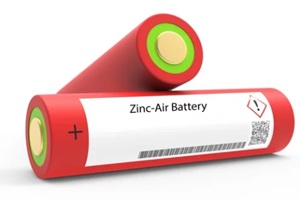May 1, 2025

In plastic manufacturing, zinc-air batteries and biodegradable plastics stand out as impactful innovations that blend sustainability with real-world usability. These technologies offer practical, scalable solutions to address environmental goals without requiring industries to compromise performance or profitability.
For businesses in the plastics and renewable energy sectors, these advancements represent a growing shift, where environmental stewardship can be fully compatible with growth strategies. Zinc-air batteries and biodegradable plastics are among the tools manufacturers can use to drive progress, reduce waste, and build a more adaptable, forward-thinking industry.
Zinc, though often overlooked, offers a powerful mix of safety, scalability, and cost-effectiveness. In energy storage, it’s gaining attention for its ability to support long-duration applications while avoiding the resource constraints and safety issues tied to other battery chemistries.
Zinc-air batteries use low-cost materials and offer discharge durations ranging from 10 to 100 hours. Their non-flammable aqueous electrolyte adds a layer of safety, while many components can be recycled, supporting broader circular economy goals within the energy sector.
The operational process behind zinc-air batteries is both innovative and efficient. During charging, zinc metal forms on electrodes and is periodically removed, falling into the electrolyte for storage until needed. In the discharge phase, air facilitates the dissolution of zinc into the electrolyte, which is recirculated for continuous cycling.
Its modular design improves its overall flexibility, allowing for applications that range from smaller kilowatt-scale systems to full megawatt-scale installations. This technology can actively meet the demands of modern energy storage while also positioning itself as a sustainable solution for a growing renewable energy industry.
Biodegradable plastics have gained momentum in recent years, evolving from a niche concept to a viable solution for targeted applications. While early skepticism and misconceptions slowed adoption, increased awareness and improved material performance have opened the door to broader industry acceptance.
Today, multiple types of biodegradable plastics are available, including PLA (polylactic acid), PHA (polyhydroxyalkanoates), starch-based resins, and oxo-biodegradable plastics that incorporate additives like d2w. Each option serves different applications based on lifecycle needs, degradation timelines, and environmental conditions. While biodegradable plastics still represent a small share of global plastic usage, ongoing innovation and greater supply chain integration are helping drive more widespread implementation.

As one example of biodegradable technology, the d2w additive offers a streamlined way to produce plastics that break down more readily when exposed to oxygen. Integrated during manufacturing, the additive enables traditional plastics to degrade into water, carbon dioxide, and biomass over a controlled period.
Its appeal is its compatibility with existing production methods and its flexibility, such as in agricultural films that can degrade within a few months after use. However, d2w is just one approach among several. As industry interest grows, manufacturers are evaluating a range of biodegradable solutions to meet different needs while aligning with both environmental and operational goals.
Zinc-air batteries and biodegradable plastics illustrate how innovation and environmental responsibility can move in tandem. These technologies, alongside other emerging materials and systems, give businesses a chance to make meaningful changes while improving long-term resilience. When adopted thoughtfully, technologies like these support energy transition goals, improve material sustainability and reduce the environmental footprint of core operations. Their success depends not only on performance but on education, collaboration, and clarity in application.
For example, zinc-air batteries offer low-cost, long-duration energy storage that can support renewable infrastructure. Biodegradable plastics, whether made from plant-based sources or designed with advanced additives, can reduce single-use waste and help companies meet increasingly urgent packaging and disposal challenges.
The key to continued progress is found in exploring multiple avenues and recognizing that sustainable solutions are not one-size-fits-all. Industry-led collaboration, pilot programs, and smarter communication about real-world benefits will continue to drive adoption across sectors.

Technologies like zinc-air batteries and biodegradable plastics represent some of the most promising developments in sustainable plastic manufacturing today. By continuing to explore and invest in materials that balance performance with responsibility, the industry can make measurable strides toward reducing environmental impact while supporting long-term business growth.
Industry professionals are encouraged to join PLASTICS, the Plastics Industry Association, to stay informed on the latest advancements, participate in sustainability initiatives, and collaborate with others who are shaping the future of plastic manufacturing.
PLASTICS and the Future Leaders in Plastics (FLiP) Committee are devoted to supporting and encouraging the next generation of plastics leaders who will play a crucial role in the innovation, technology and future of the plastics industry. FLiP’s mission is to provide young professionals under the age of 40 the exposure, education and resources they need to build lifelong careers in plastics. Want to join? Want to get your employees involved? Email: [email protected]